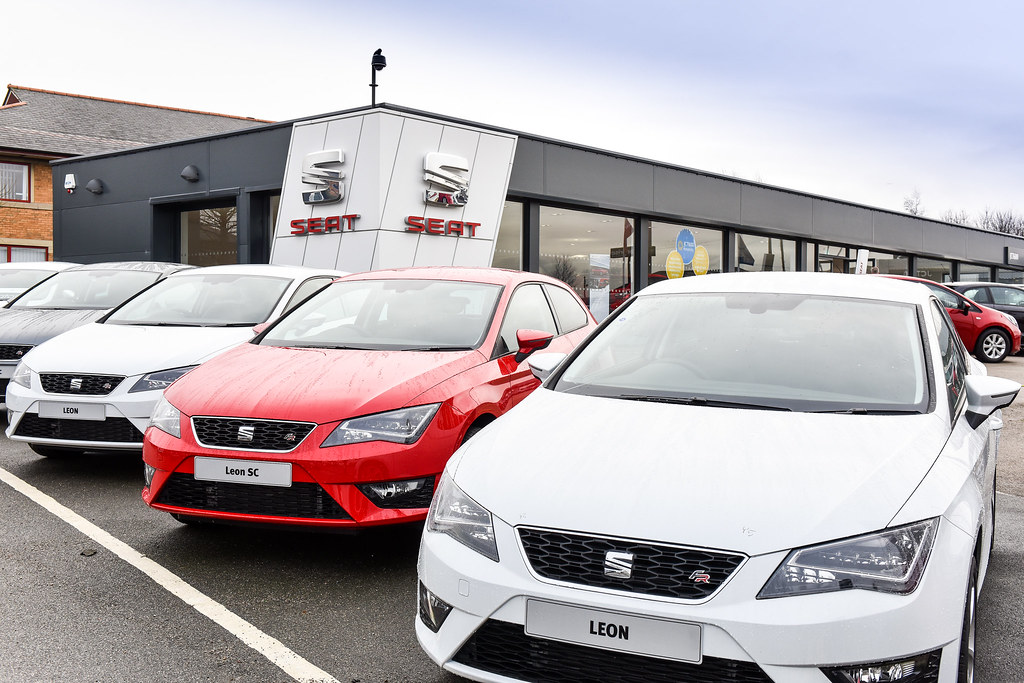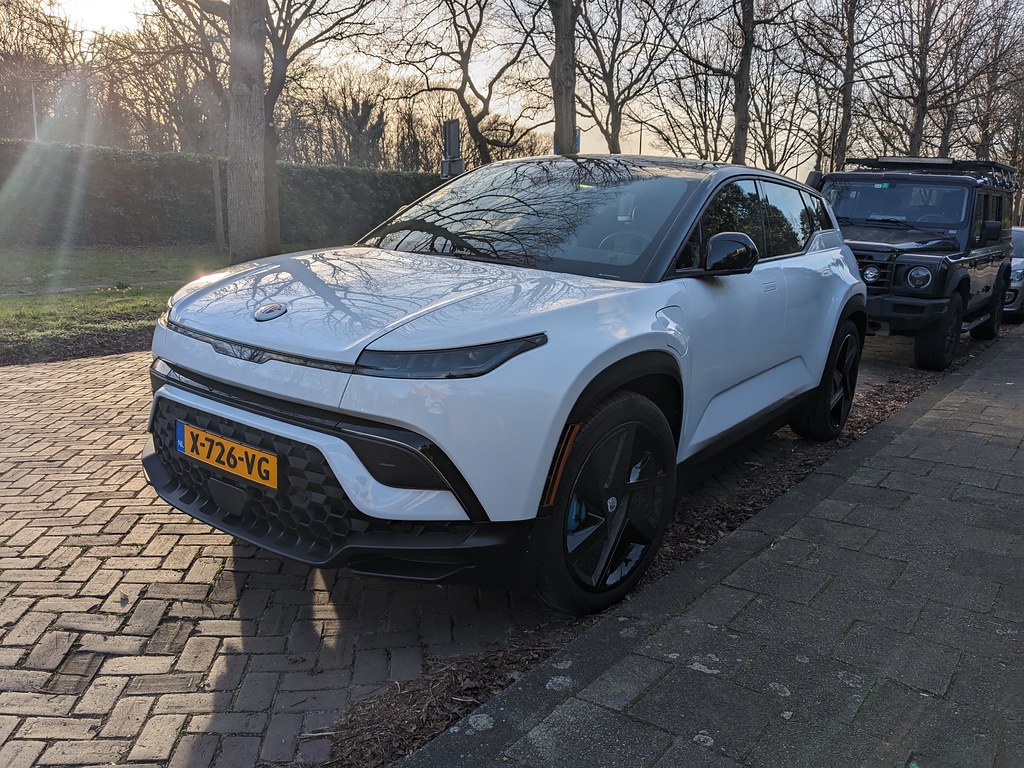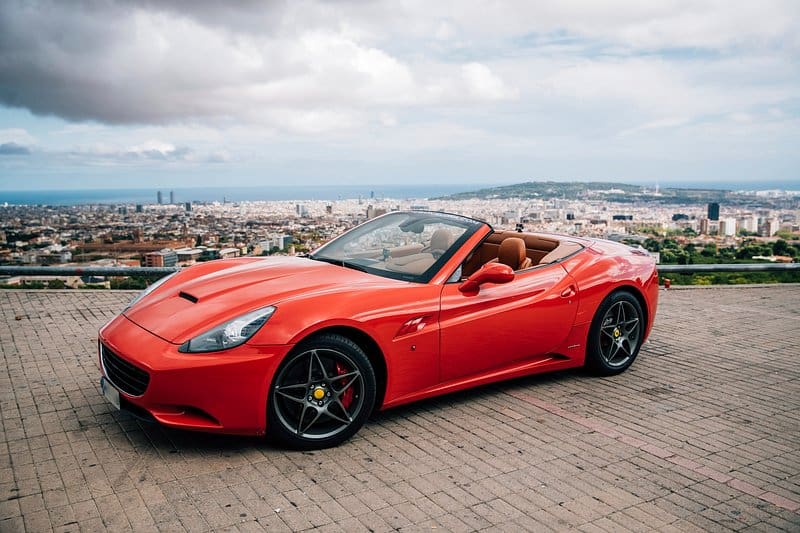
The automotive world is a fascinating landscape, constantly shifting and evolving. Over the past two decades, the U.S. auto industry has navigated a rollercoaster of change. While car sales have bravely rebounded from the tough recession lows of 2009, they haven’t quite reached the soaring peak numbers we saw back in 2001. This means automakers face an exciting, yet challenging, puzzle: how do you keep customers coming back for more when folks are holding onto their beloved vehicles longer and driving fewer miles? It’s all about making a lasting connection.
Despite these compelling trends, some car manufacturers have truly mastered the art of cultivating a fiercely loyal base of returning customers. This article is your backstage pass to understanding how leading brands like Ford, Toyota, Honda, and others have not only navigated but thrived in a rapidly evolving market. They’ve built more than just cars; they’ve built communities, trust, and even a bit of automotive magic.
Loyalty in the car world isn’t just about signing on the dotted line for another purchase; it’s about a deep-seated passion! We’ve seen car brands inspire such incredible enthusiasm that people are willing to display their allegiance right on their skin. While automakers might prefer you show your love by continuing to purchase their vehicles over and over again, the emotional connection is undeniable. So, who are these champions of customer retention? Let’s dive into some of the top contenders that have truly mastered the art of winning hearts and minds on the road, turning drivers into lifelong fans!

1. **Ford: America’s Unwavering Loyalty Leader**
When we talk about brand loyalty, Ford isn’t just in the conversation – it often leads it. This iconic American automaker consistently tops the charts for customer retention, proudly boasting an impressive return rate. Early data shows Ford leading the pack with a remarkable 44.1% return rate among its customers, a testament to its enduring appeal and ability to connect with drivers.
More recent figures from S&P Global for the period from April 2024 to March 2025 painted an even brighter picture. Ford achieved an astonishing customer-retention rate of 58.5 percent. This places them firmly at the forefront, showcasing a powerful ability to keep owners within the Ford family, year after year. It’s a clear signal that once you’re a Ford driver, you’re often a Ford driver for life.
A massive chunk of Ford’s widespread success can be attributed to the legendary F-150 pickup truck. This powerhouse isn’t just a vehicle; it’s a staple, consistently ranking as the best-selling vehicle in the entire U.S. Its unparalleled performance and utility have built a multi-generational legacy of trust. Furthermore, Ford’s ability to navigate previous economic downturns without needing a government bailout further solidified consumer confidence.
Beyond the colossal success of its trucks, Ford’s diverse lineup also plays a vital role in its dominance of customer retention. Popular models like the Fusion sedan, the versatile Escape SUV, and the efficient Focus compact car all contribute significantly. The potent combination of a rich brand heritage, reputation for reliability, and consistent performance across its range ensures Ford remains at the absolute forefront of consumer loyalty.
Ford isn’t just selling cars; it’s selling a piece of American heritage and a promise of enduring quality. This deep-rooted emotional connection, combined with a broad appeal across various segments, makes Ford the brand with some of the most loyal customers globally. It’s a genuine testament to a company that truly understands its audience and delivers what they need and love, repeatedly.
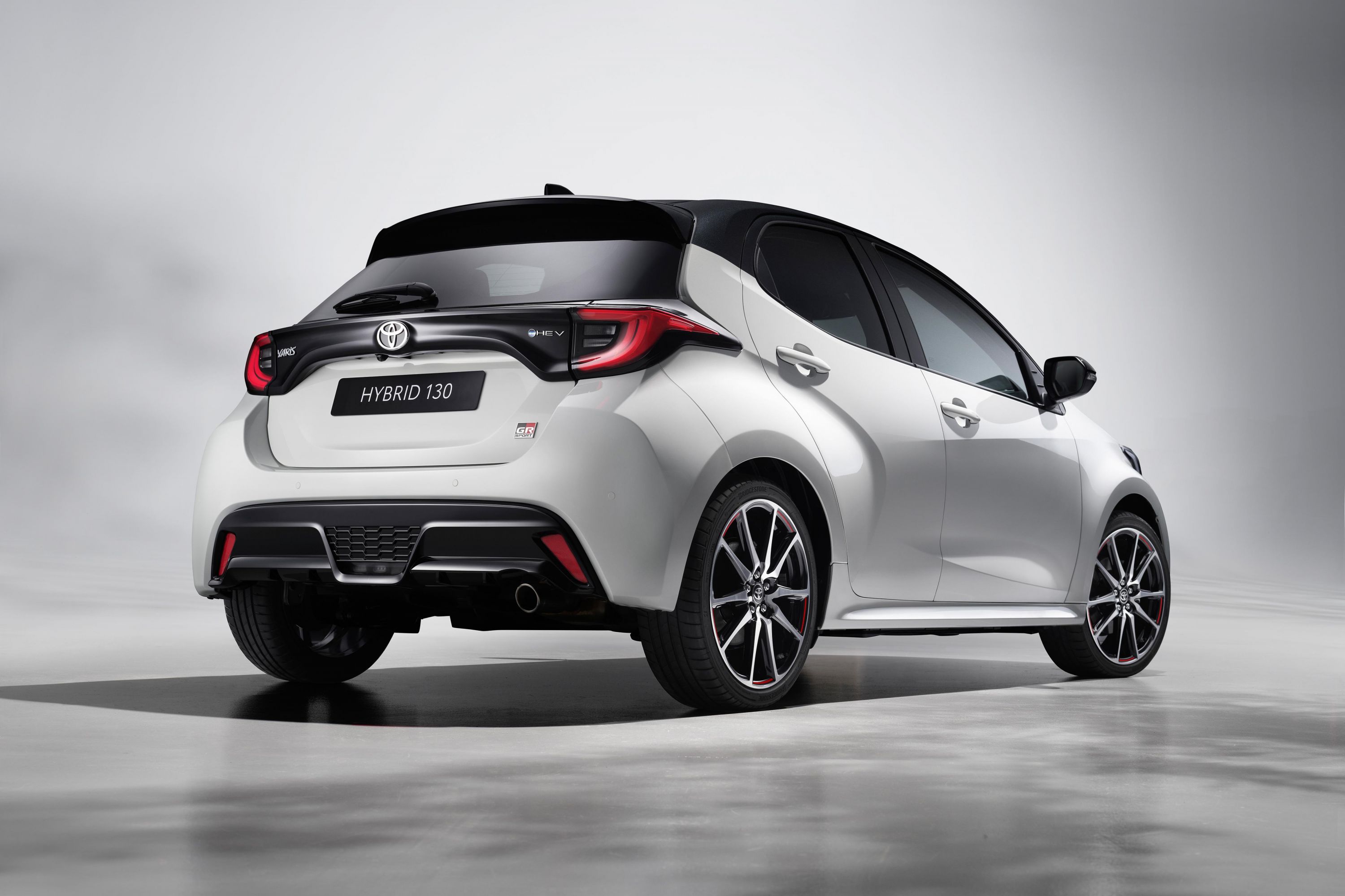
2. **Toyota: The Unshakeable Benchmark for Reliability**
Toyota stands as a veritable titan in the automotive world, revered globally as an unshakeable benchmark for reliability and trustworthiness. Despite facing significant headwinds in the past, including massive recalls and unsettling production disruptions, Toyota’s reputation has remained remarkably resilient. This unwavering faith from its customer base is reflected in a truly remarkable return rate of 43.3%, showcasing an incredible ability to bring buyers back.
The secret sauce to Toyota’s enduring appeal lies deeply rooted in its legendary commitment to reliability and fuel efficiency. These core tenets are not just marketing slogans; they are fundamental characteristics woven into the very fabric of every vehicle they produce. For families and commuters alike, the promise of a car that starts every day and sips fuel is an incredibly powerful draw, fostering a deep sense of security.
Toyota’s impressive roster of top-selling vehicles further illustrates its dominance in the market. The Camry and Corolla steadfastly continue to be the best-selling vehicles in their respective classes, proving their consistent appeal to a broad demographic. Meanwhile, the innovative Prius hybrid maintains its undeniable dominance in the burgeoning green vehicle segment, attracting environmentally conscious drivers.
When it comes to industry recognition, Toyota also shines brightly. It proudly claimed the title of the mass-market loyalty leader in the prestigious 2024 J.D. Power Automotive Brand Loyalty Study, the most recent edition available. This significant accolade underscores the brand’s consistent success in retaining its customer base, reaffirming its position as a leader in fostering lasting connections with drivers.
In essence, Toyota’s unwavering commitment to exceptional quality, combined with a steadfast focus on long-term dependability, ensures that a significant portion of its buyers remain loyal for life. It’s a brand that has consistently delivered on its promises, earning a level of trust and affection that few others can rival. When you buy a Toyota, you’re not just getting a car; you’re investing in peace of mind.
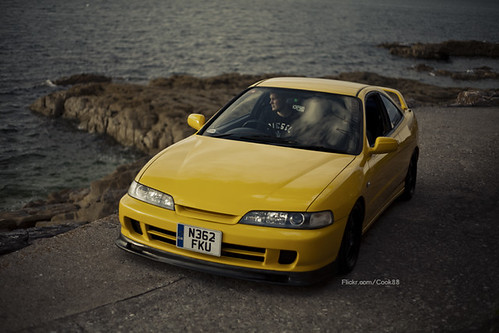
3. **Honda: A Legacy Forged in Dependability**
Honda has meticulously carved out a rock-solid reputation in the U.S. automotive market, synonymous with reliability, remarkable efficiency, and enviable resale value. These pillars of excellence combine to make it one of the most trusted and consistently best-selling car manufacturers. With a robust return customer rate of 38.1%, Honda consistently demonstrates its incredible ability to turn first-time buyers into lifelong advocates.
The strength of Honda’s legacy is vividly displayed in the enduring popularity of its flagship models. The Accord and Civic sedans are undisputed champions, dominating their respective midsize and compact sedan markets. Not to be outdone, the CR-V compact SUV remains one of the most beloved and popular small SUVs on the road, a testament to its versatility and widespread acceptance.
Honda’s approach to vehicle design is often described as conservative, yet it is undeniably effective. This strategic conservatism, coupled with its consistent delivery of strong resale values and commendably low maintenance costs, creates a compelling value proposition. Drivers know that a Honda isn’t just a purchase; it’s a smart, long-term investment that minimizes headaches and maximizes peace of mind.
Reinforcing its impressive track record, S&P Global’s recent research for April 2024 to March 2025 further highlights Honda’s formidable customer loyalty. The brand achieved an impressive customer-retention rate of 55.5 percent, placing it firmly among the top three overall brands with the most loyal customers. This external validation solidifies Honda’s standing as a powerhouse in customer retention.
Ultimately, Honda’s enduring success is built upon a foundation of dependable performance, driver satisfaction, and a commitment to quality. Its cars don’t just meet expectations; they consistently exceed them, ensuring that loyal customers keep returning to the brand that has earned their trust. For countless drivers, a Honda simply means reliability at its core.
Read more about: The Enduring Legacy: Ranking 10 Family Vans Built to Serve Multiple Generations of Owners
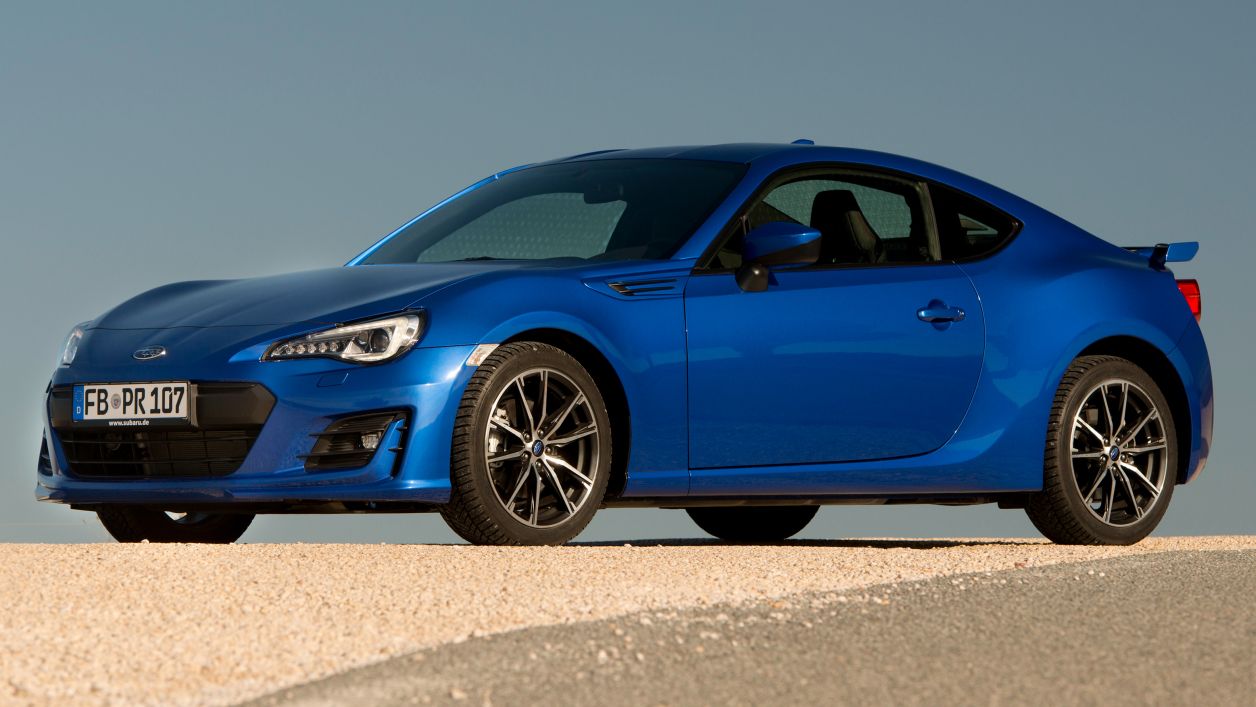
4. **Subaru: Cultivating a Lifestyle, Not Just a Car**
Subaru has truly mastered the art of fostering customer loyalty, not merely by selling cars, but by cultivating a distinct lifestyle brand. This unique positioning is a cornerstone of its success. Renowned for its standard all-wheel drive systems and an almost mythic rugged reliability, Subaru has become the go-to choice for a vibrant community of adventure-seekers, outdoor enthusiasts, and safety-conscious families.
The commitment to all-weather capability has cemented the Legacy, Outback, and Forester models as indispensable staples, particularly in the colder, more rugged regions of the U.S. Here, where challenging driving conditions are a fact of life, Subaru’s vehicles aren’t just appreciated; they’re an absolute necessity. Owners rely on their Subarus to get them through snow, mud, and unpaved trails, building an unbreakable bond.
Subaru’s dedication extends beyond just engineering impressive vehicles; the brand also boasts a genuine commitment to sustainability and active community engagement. This ethos further strengthens its deep bond with customers, transforming buyers into passionate advocates. The brand’s focus on values that align with its clientele contributes significantly to its impressive return rate of 35.7%.
In the competitive landscape of automotive loyalty, Subaru enjoys what can only be described as near cult-status. This is particularly evident among outdoor adventurers and those who value robust safety features. The brand finished a strong No. 2 for SUV customer retention in the mainstream category in the 2024 J.D. Power Automotive Brand Loyalty Study, a powerful indicator of its loyal following.
For Subaru drivers, owning one isn’t just about transportation; it’s a statement about their values and their desire for a vehicle that can keep up with their active lives. This profound connection to a lifestyle makes Subaru a truly unique and powerful force in the world of automotive loyalty, where trust and shared values are paramount. It’s more than just a car.

5. **Lexus: Resilient Luxury Through Crisis**
As Toyota’s esteemed luxury division, Lexus has meticulously built a rock-solid reputation that seamlessly blends reliability with opulent comfort and exhilarating performance. What truly sets Lexus apart, however, is its remarkable resilience in the face of adversity. Even during the challenging Toyota recall crisis of 2009, Lexus owners remained incredibly steadfast in their loyalty, a powerful indicator of deep trust.
The brand’s ability to recover quickly from significant disruptions, such as the Japan earthquake and tsunami in 2011, further highlights its inherent strength. Sales not only remained stable but saw significant rebounds, showcasing the unwavering confidence customers have. This resilience is a direct result of its relentless focus on high-quality engineering, luxurious features, and an unwavering dedication to exceptional customer satisfaction.
Lexus consistently attracts repeat buyers with its diverse and appealing lineup of models. From the sophisticated ES sedan to the popular RX SUV, and the sporty IS sedan, Lexus offers something for every discerning taste. This commitment to variety and quality contributes to a commendable return customer rate of 34.1%.
In the broader context of automotive loyalty, Lexus masterfully combines the legendary reliability of Toyota with a distinct aura of refined luxury. Customers are consistently drawn to the brand not only for its impeccable craftsmanship and exceptionally low defect rates but also for its top-tier service experience. This holistic approach to customer care results in a fiercely loyal customer base.
Choosing a Lexus isn’t just about acquiring a luxury vehicle; it’s about investing in a promise of reliability without the headaches, coupled with an unparalleled driving experience. This potent combination creates a lasting impression, ensuring that Lexus continues to be a go-to choice for those who demand excellence and unwavering support. It’s truly luxury without compromise.

6. **Mercedes-Benz: The Undeniable Prestige Factor**
Mercedes-Benz, a name synonymous with automotive excellence, has long been a global beacon of luxury, undeniable prestige, and cutting-edge technology. This German automaker commands a significant presence in the high-end market, consistently delivering vehicles that exude sophistication. While it engages in a spirited rivalry with BMW for market share, Mercedes-Benz consistently edges ahead in customer loyalty, proudly boasting a return rate of 34.6%.
The true strength of the Mercedes-Benz brand lies in its remarkable ability to captivate a wide spectrum of luxury buyers. Whether appealing to discerning high-end clients or drawing in mainstream luxury consumers, Mercedes-Benz effortlessly caters to both. This broad appeal is a key driver of its sustained loyalty.
Its iconic models exemplify this dual appeal. The flagship S-Class sedan is an undisputed titan, dominating the ultra-luxury segment. Simultaneously, the mid-range E-Class sedan maintains a powerful presence, offering a compelling blend of luxury and everyday practicality. Beyond these, the sleek CLA-Class and an expanding lineup of sophisticated SUVs attract a younger generation of luxury consumers.
Mercedes-Benz doesn’t rest on its laurels; it maintains its impressive loyalty by relentlessly innovating and consistently reinforcing its storied legacy of excellence. Each new model and technological advancement serves to remind customers why they chose Mercedes-Benz, solidifying their trust. This continuous pursuit of perfection is a cornerstone of its enduring success.
According to S&P Global’s analysis for April 2024 to March 2025, Mercedes-Benz secured a strong second place in luxury brand loyalty with a commendable 54.2 percent customer retention rate. This data firmly places it on the podium, demonstrating that its appeal goes far beyond initial allure. Choosing a Mercedes-Benz is not just about a car; it’s about embracing a lifestyle defined by tradition, cutting-edge engineering, and timeless luxury.
Read more about: Unveiling the Hammer Prices: What Savvy Collectors Are Paying in the World of Classic Car Auctions
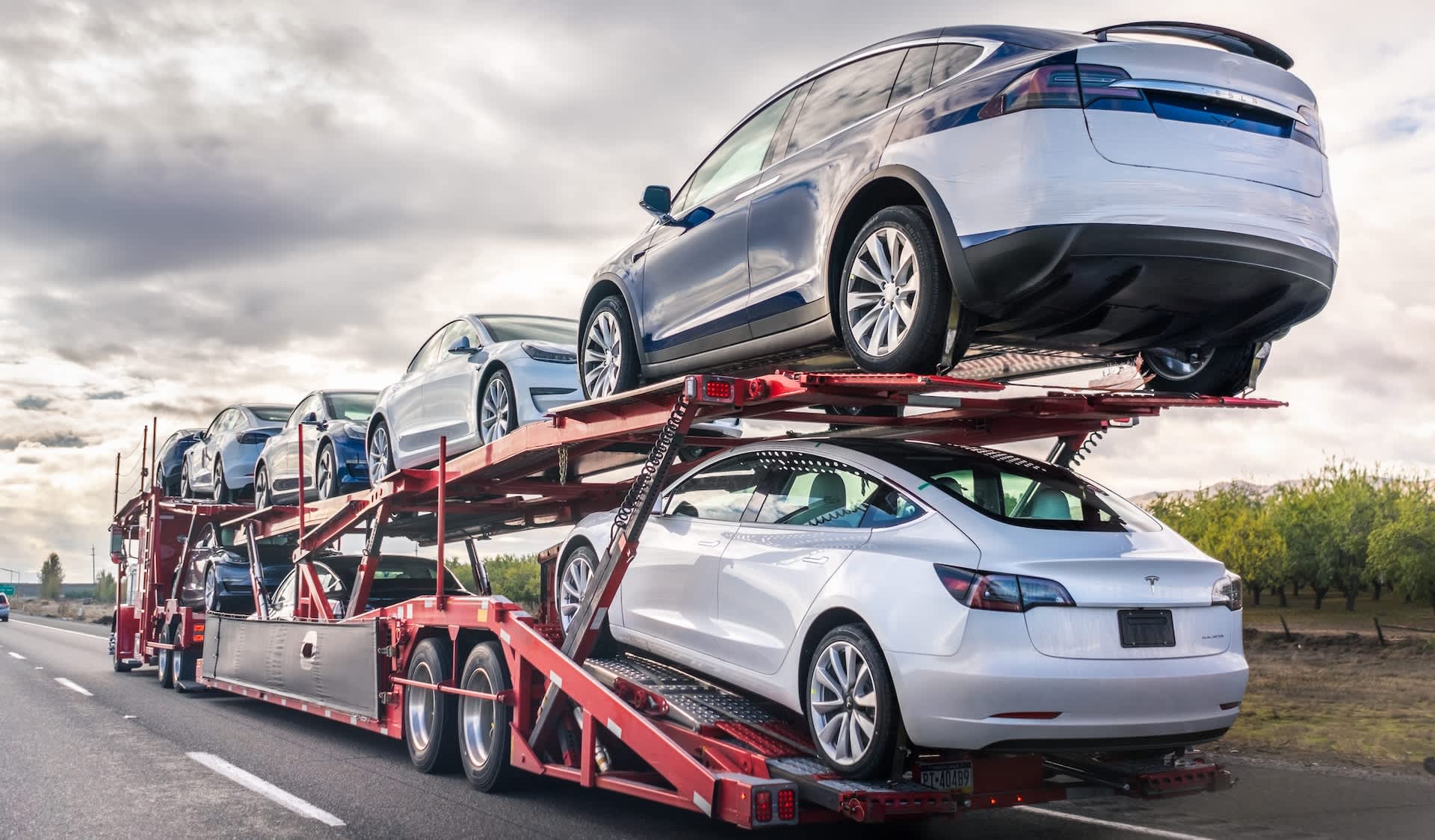
7. **Tesla: The Electrifying Tech-Loyal Tribe**
Tesla has truly carved out its own unique and fiercely loyal niche within the rapidly accelerating electric vehicle (EV) world. It’s not just a car company; it’s a movement, attracting a passionate fanbase that sees their vehicles as symbols of sustainable performance and groundbreaking innovation. This dedication translates into impressive loyalty figures.
According to S&P Global’s extensive research for April 2024 to March 2025, Tesla led the way in luxury brand loyalty, achieving an extraordinary customer-retention rate of 61.6 percent. This figure is a testament to the strong allegiance its customers feel, indicating that once you experience a Tesla, you’re likely to stick with the brand. While there’s a disclaimer about future sales and values, this loyalty rate during the specified period is undeniable.
What truly distinguishes Tesla, and cultivates such unwavering loyalty, is its pioneering spirit in electric innovation. Its vehicles are celebrated for their groundbreaking range, exhilarating rapid acceleration, and a tech-heavy design that pushes the boundaries of what a car can be. Owners aren’t just driving; they’re experiencing the future of automotive technology, complete with over-the-air updates.
Beyond the impressive technology, Tesla has fostered a passionate and vocal community of advocates. These drivers aren’t just customers; they are ardent supporters who actively share their experiences, charging tips, and updates. This vibrant community interaction, often centered around forums and social media, reinforces the brand’s identity and creates a powerful sense of belonging.
In essence, Tesla inspires strong brand loyalty and multiple repeat purchases by constantly challenging traditional performance cars and proving that electric doesn’t mean boring. The brand has positioned itself as a symbol of progress, attracting a “tech-loyal tribe” eager to be part of the electric revolution. Despite market fluctuations, the core appeal of Tesla’s cutting-edge technology and a dedicated community ensures its distinctive place in the loyalty rankings.
After exploring the automotive giants that command fierce brand loyalty, it’s time to shift gears and celebrate some individual legends. We’re talking about cars that are more than vehicles; they’re cultural touchstones inspiring profound devotion. These cult classics transcend mere transportation, becoming symbols of identity and passion. Get ready to dive into iconic rides that foster unwavering fan bases and build communities worldwide!

8. **Volkswagen Beetle: The Endearing ‘People’s Car’**
Few cars have captured hearts quite like the classic Volkswagen Beetle. Affectionately known as the ‘people’s car,’ this charming icon has cruised since the 1930s, captivating generations with its distinctive, bubbly shape and unique personality. Its instantly recognizable design remains timeless, a beloved sight on roads across the globe.
The Beetle’s enduring legacy isn’t just about its looks; it’s rooted in its incredible affordability, robust reliability, and straightforward repairability. These practical virtues made it accessible to millions, solidifying its place in automotive history. For many, the Beetle represented freedom on four wheels, a simple yet dependable companion for everyday life and grand adventures alike.
This little car inspires a truly passionate community. Fans enthusiastically flock to online groups like r/Volkswagen, boasting over 174k users, and dedicated forums such as VW Beetle with almost 80k members. These vibrant spaces are buzzing with discussions, sharing everything from intricate restoration tips to hunting down elusive rare parts, all to keep the spirit of the Beetle very much alive.
Car Model Information: 2012 Volkswagen Beetle 2.5L
Sp: uk
Name: Volkswagen Type 1,”Beetle”
Caption: 1965–1966 Volkswagen Käfer
Manufacturer: Volkswagen
Alt: A front-three quarters view of a pale-yellow Volkswagen Käfer. It features 165/80R15 tires, which shod 15×4. 5″ silver, circular wheels. The Käfer features a beetle-like body, and its window is open. The picture is taken with much greenery in the background, and the photo was edited to give it a more warmer tone.
Aka: List of names for the Volkswagen Type 1
Assembly: #Markets and assembly
Designer: Ferdinand Porsche
Class: Small family car
BodyStyle: Sedan (automobile),convertible
Production: 1938–2003,21,529,464 produced
Successor: Volkswagen Golf Mk1,Volkswagen Gol#First generation (Typ30, 1980),Volkswagen New Beetle
Layout: Rear-engine, rear-wheel-drive layout
Engine: Petrol,Volkswagen air-cooled engine,1192 cc H4,1285 cc H4,1493 cc H4,1584 cc H4
Transmission: manual transmission,Saxomat,Autostick
Wheelbase: convert
Length: convert
Width: convert
Height: 1500 mm
Abbr: on
Weight: convert
Categories: 1940s cars, 1950s cars, 1960s cars, 1970s cars, 1980s cars
Summary: The Volkswagen Beetle, officially the Volkswagen Type 1, is a small family car produced by the German company Volkswagen from 1938 to 2003. A global cultural icon known for its bug-like design, the Beetle is widely regarded as one of the most influential cars of the 20th century. Its production period of 65 years is the longest for any single generation of automobile, and its total production of 21.5 million units makes it the most produced car of a single platform in history and the second-highest of all nameplates manufactured in the 20th century.
The Beetle was conceived in the early 1930s. The leader of Nazi Germany, Adolf Hitler, decided there was a need for a people’s car—an inexpensive, simple, mass-produced car—to serve Germany’s new road network, the Reichsautobahn. The German engineer Ferdinand Porsche and his design team began developing and designing the car in the early 1930s, but the fundamental design concept can be attributed to Béla Barényi in 1925, predating Porsche’s claims by almost ten years. The result was the Volkswagen Type 1 and the introduction of the Volkswagen brand. Volkswagen initially slated production for the late 1930s, but the outbreak of war in 1939 meant that production was delayed until the war had ended. The car was originally called the Volkswagen Type 1 and marketed simply as the Volkswagen. It was not until 1968 that it was officially named the “Beetle”.
Volkswagen implemented designations for the Beetle in the 1960s, including 1200, 1300, 1500, 1600, 1302, and 1303. Volkswagen introduced a series of large luxury models throughout the 1960s and 1970s—comprising the Type 3, Type 4 and K70—to supplement the Beetle, but none of these models achieved the level of success that it did. In 1972, it became the best-selling car of all time, a position it retained for nearly three decades. Rapidly changing consumer preferences toward front-wheel drive compact hatchbacks in Europe prompted Volkswagen’s gradual shift away from rear-wheel drive, starting with the Golf in 1974. In the late 1970s and ’80s, Japanese automakers dominated some markets around the world, which contributed to the Beetle’s declining popularity.
The Beetle remains one of the best-selling cars of all time and is the first to sell over 20 million units. Over its lifespan, its design remained consistent, yet Volkswagen implemented over 78,000 incremental updates. These modifications were often subtle, involving minor alterations to its exterior, interior, colours, and lighting. Some more noteworthy changes included the introduction of new engines, models and systems, such as improved technology or comfort. The Beetle maintains a substantial cultural influence and is regarded as one of the most iconic vehicles in automotive history; its success largely influenced the way automobiles are designed and marketed, and propelled Volkswagen’s introduction of a Golf-based series of vehicles.
Get more information about: Volkswagen Beetle
Buying a high-performing used car >>>
Brand: Volkswagen Model: Beetle
Price: $13,985 Mileage: 27,389 mi.
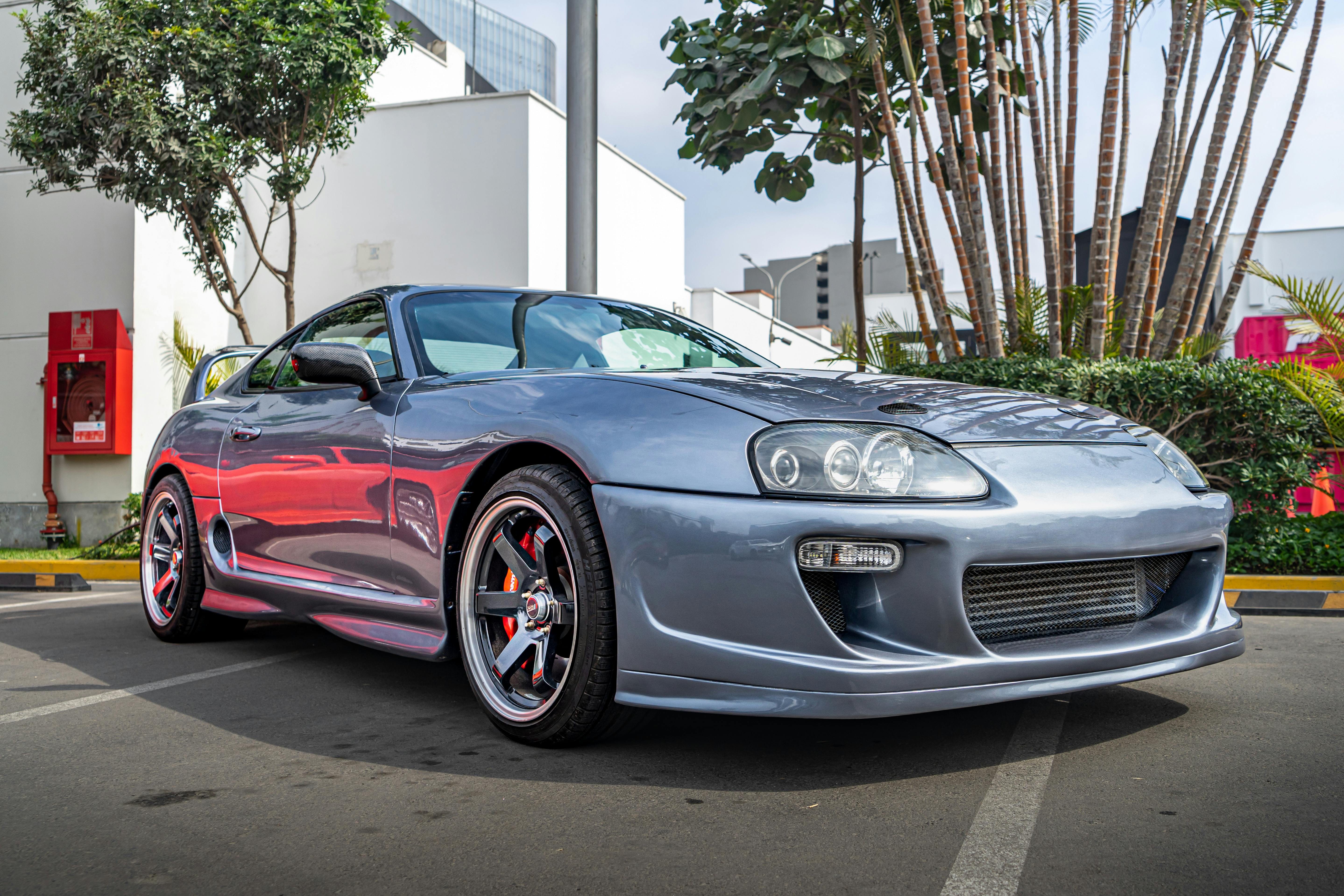
9. **Toyota Supra: The JDM Legend**
The Toyota Supra has always been a name whispered with reverence among car enthusiasts, but the fourth-generation (MK4) truly cemented its iconic status. Its electrifying appearance in “The Fast and the Furious” and the virtually limitless tuning potential of its 2JZ engine propelled it into automotive legend. This car isn’t just fast; it’s a canvas for extreme performance.
The MK4 Supra earned its mythic reputation because its 2JZ engine is a beast, famously capable of effortlessly handling over 1,000 horsepower with the right modifications. This incredible engineering made it the ultimate dream car for speed demons and tuners, who relished pushing performance boundaries. It’s a car built for pure, unadulterated power and exhilarating speed.
With 35k dedicated fans on r/Supra and thousands more active on forums like mkivsupra.net, the Supra community is a vibrant hub of passion. Members share everything from custom builds to drag-racing stories, celebrating the car’s unrivaled performance heritage. The arrival of the MK5 only amplified excitement, sparking lively debates between die-hard MK4 purists and newer fans, proving the Supra’s evergreen appeal.
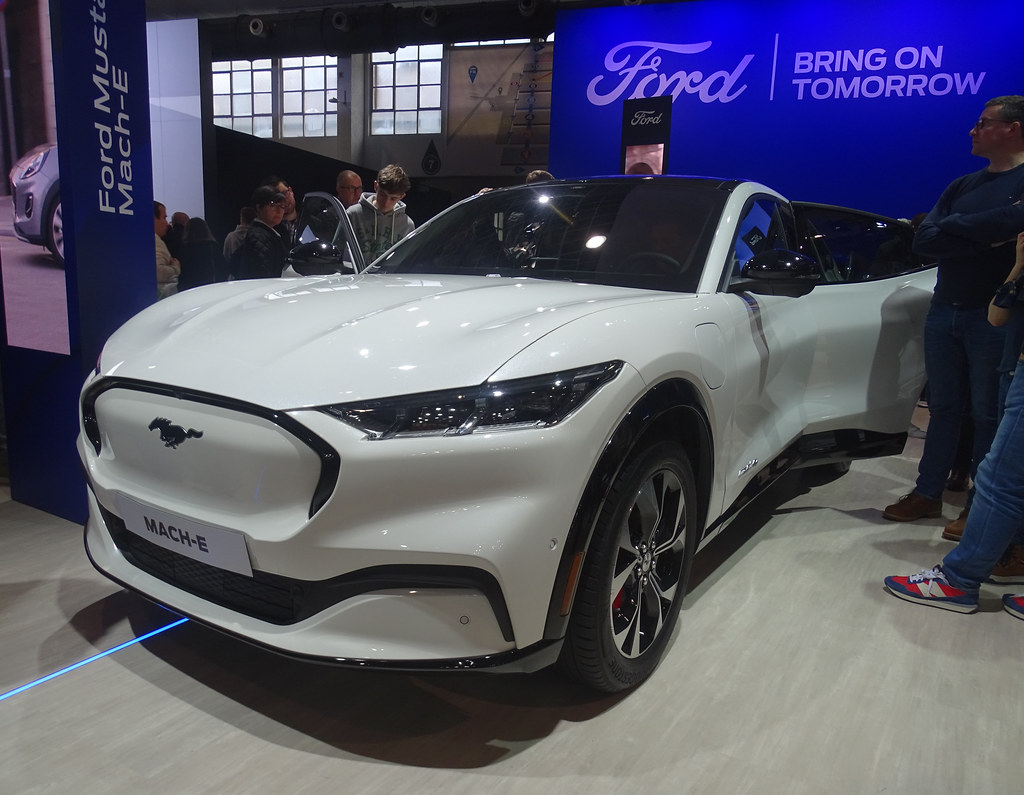
10. **Ford Mustang: The Quintessential American Muscle**
Few cars boast a history as rich and storied as the Ford Mustang, a true icon embodying American muscle since its 1964 debut. Each generation has ignited a fresh wave of fervent loyalists, drawn to its irresistible blend of powerful engines, sleek styling, and infinite customization. The Mustang is more than a car; it’s a bold statement of performance and heritage.
The Mustang’s appeal runs deep, resonating with drivers who crave raw power and a distinctive aesthetic. Its roaring V8 engines and aggressive stance have defined an entire automotive segment. Whether a classic from the sixties or a cutting-edge GT500, the Mustang always commands attention and respect, embodying unbridled American performance.
On Reddit, the r/Mustang community thrives with over 167k members, showcasing everything from lovingly restored vintage models to modern, high-performance variants. Beyond Reddit, forums like mustangforums.com (over 235k members) and vintage-mustang (over 94k members) provide endless spaces for enthusiasts. These vibrant communities bond over the Mustang’s unmistakable engine note and illustrious racing heritage, connecting generations of drivers.
Car Model Information: 2022 Ford Mustang GT Premium
Name: Ford Mustang
Caption: 2018 Ford Mustang GT 5.0
Aka: Ford T5 (Germany)
Manufacturer: Ford Motor Company
Production: March 1964 – present
ModelYears: 1965–present
Class: Unbulleted list
BodyStyle: Unbulleted list
Layout: Front-engine, rear-wheel-drive layout
Categories: 1970s cars, 1980s cars, 1990s cars, 2+2 coupés, 2000s cars
Summary: The Ford Mustang is an American automobile manufactured and marketed by Ford since 1964, as Ford’s longest nameplate in continuous production. Currently in its seventh generation, it is the fifth-best selling Ford car nameplate. The namesake of the “pony car” automobile segment, the Mustang was developed as a highly styled line of sporty coupes and convertibles derived from existing model lines, initially distinguished by its pronounced “long hood, short deck” proportions.
Originally predicted to sell 100,000 vehicles yearly, the 1965 Mustang became the most successful vehicle launch since the 1927 Model A. Introduced on April 17, 1964 (16 days after the Plymouth Barracuda), over 400,000 units were sold in its first year; the one-millionth Mustang was sold within two years of its launch. In August 2018, Ford produced the 10-millionth Mustang; matching the first 1965 Mustang, the vehicle was a 2019 Wimbledon White convertible with a V8 engine.
The success of the Mustang launch led to multiple competitors from other American manufacturers, including the Chevrolet Camaro and Pontiac Firebird (1967), AMC Javelin (1968), and Dodge Challenger (1970). It also competed with the Plymouth Barracuda, which was launched around the same time. The Mustang also had an effect on designs of coupes worldwide, leading to the marketing of the Toyota Celica and Ford Capri in the United States (the latter, by Lincoln-Mercury). The Mercury Cougar was launched in 1967 as a unique-bodied higher-trim alternative to the Mustang; during the 1970s, it included more features and was marketed as a personal luxury car.
From 1965 until 2004, the Mustang shared chassis commonality with other Ford model lines, staying rear-wheel-drive throughout its production. From 1965 to 1973, the Mustang was derived from the 1960 Ford Falcon compact. From 1974 until 1978, the Mustang (denoted Mustang II) was a longer-wheelbase version of the Ford Pinto. From 1979 until 2004, the Mustang shared its Fox platform chassis with 14 other Ford vehicles (becoming the final one to use the Fox architecture). Since 2005, the Mustang has used the D2C platform, unique to the Mustang.
Through its production, multiple nameplates have been associated with the Ford Mustang series, including GT, Mach 1, Boss 302/429, Cobra (separate from Shelby Cobra), and Bullitt, along with “5.0” fender badging (denoting 4.9 L OHV or 5.0 L DOHC V8 engines).
Get more information about: Ford Mustang
Buying a high-performing used car >>>
Brand: Ford Model: Mustang
Price: $38,956 Mileage: 21,117 mi.
Read more about: 10 Iconic American Cars That Are Simply Too Dangerous for Today’s Roads

11. **Nissan Skyline GT-R: “Godzilla” Roars On**
The Nissan Skyline GT-R earned its fearsome nickname, “Godzilla,” for a reason: its legendary RB26 engine and advanced all-wheel-drive system made it an unstoppable force. The R32, R33, and R34 generations each cultivated intense cult followings, especially among performance enthusiasts who craved its unparalleled dominance and engineering prowess. It truly became a symbol of raw power.
In many countries, the R34 generation remains a rare and highly sought-after prize, making ownership a true badge of honor. This exclusivity only fuels passion, as enthusiasts eagerly await their chance to experience a piece of automotive history. The GT-R isn’t just a car; it’s a statement of ultimate performance and a symbol of Japanese engineering excellence that inspires awe.
Skyline fans are a dedicated bunch, gathering on platforms like r/Skyline with 29k members and the expansive GT-R Life forums. Here, they swap thrilling import stories, discuss intricate modifications, and proudly share dyno numbers, all in celebration of their beloved “Godzilla.” The collective passion for these machines is palpable, cementing their place as pillars of the JDM tuning scene.
Car Model Information: 2021 Buick Envision Preferred
Name: Nissan Skyline GT-R
Caption: 2002 Nissan Skyline GT-R V·spec II (BNR34)
Manufacturer: Nissan
Production: unbulleted list
Assembly: unbulleted list
Class: Sports car
Related: unbulleted list
Transmission: unbulleted list
Successor: Nissan GT-R
Categories: 1970s cars, 1980s cars, 1990s cars, 2000s cars, 24 Hours of Le Mans race cars
Summary: The Nissan Skyline GT-R (Japanese: 日産・スカイラインGT-R, Hepburn: Nissan Sukairain GT-R) is a Japanese sports car based on the Nissan Skyline range. The first cars named “Skyline GT-R” were produced between 1969 and 1972 under the model code KPGC10, and were successful in Japanese touring car racing events. This model was followed by a brief production run of second-generation cars, under model code KPGC110, in 1973.
After a 16-year hiatus, the GT-R name was revived in 1989 as the BNR32 (“R32”) Skyline GT-R. Group A specification versions of the R32 GT-R were used to win the Japanese Touring Car Championship for four years in a row. The R32 GT-R also had success in the Australian Touring Car Championship, with Jim Richards using it to win the championship in 1991 and Mark Skaife doing the same in 1992, until a regulation change excluded the GT-R in 1993. The technology and performance of the R32 GT-R prompted the Australian motoring publication Wheels to nickname the GT-R “Godzilla” in its July 1989 edition. Wheels then carried the name through all the generations of Skyline GT-Rs, most notably the R34 GT-R, which they nicknamed “Godzilla Returns”, and described as “The best handling car we have ever driven”. In tests conducted by automotive publications, the R34 GT-R covered a quarter of a mile (402 metres) in 12.2 seconds from a standing start time and accelerated from 0–100 km/h (0–62 mph) in 4.4 seconds.
The Skyline GT-R became the flagship of Nissan performance, showing many advanced technologies including the ATTESA E-TS all-wheel drive system and the Super-HICAS four-wheel steering. Today, the car is popular for import drag racing, circuit track, time attack and events hosted by tuning magazines. Production of the Skyline GT-R ended in August 2002. The car was replaced by the GT-R (R35), an all-new vehicle based on an enhanced version of the Skyline V36 platform. Although visibly different, the two vehicles share similar design features and are manufactured in the same factory.
The Skyline GT-R was never manufactured outside Japan, and the sole export markets were Hong Kong, Singapore, Australia and New Zealand, in 1991, and the UK (in 1997, due to the Single Vehicle Approval scheme). They are also popular across the world as used Japanese imports.
Despite this, the Skyline GT-R has become an iconic sports car as a grey import vehicle in the Western world (mainly the United Kingdom, Australia, New Zealand, South Africa, Ireland, Canada, and the United States). It has become notable through pop culture such as The Fast and the Furious, Initial D, Shakotan Boogie, Tokyo Xtreme Racer, Wangan Midnight, Need for Speed, Forza, Driving Emotion Type-S, Test Drive, and Gran Turismo.
In 2019, Nismo announced that it would resume production of spare parts for all generations of the Skyline GT-R, including body panels and engines.
Get more information about: Nissan Skyline GT-R
Buying a high-performing used car >>>
Brand: Nissan Model: Skyline GT-R
Price: $19,500 Mileage: 52,471 mi.

12. **Jeep Wrangler: The Undisputed Off-Road King**
The Jeep Wrangler isn’t just a vehicle; it’s an invitation to adventure, commanding a following unlike any other. Known for its rugged build and legendary off-road capabilities, the Wrangler appeals directly to adventure lovers and outdoor enthusiasts. Whether dreaming of rock crawling or beach cruising, there’s a Wrangler and a community waiting for you, ready for any challenge.
What makes the Wrangler so special is its unwavering commitment to exploration. It’s built to tackle the toughest terrains, proving its mettle where other vehicles fear to tread. This capability creates an unbreakable bond between owner and machine, as countless stories of daring expeditions are shared within the community. It’s a vehicle designed for boundless freedom and reliability in extreme conditions.
The global Jeep community is a vibrant family, gathering enthusiastically on platforms like r/Jeep (over 185k members) and the comprehensive JeepForum.com. These online hubs are packed with fans sharing invaluable tips for off-roading, discussing modifications, and celebrating epic adventures. It’s truly a lifestyle, with Wrangler owners often treating each other like family, famously united by the iconic “Jeep wave.”
Car Model Information: 2015 Jeep Wrangler Sahara
Name: Jeep Wrangler
Caption: Jeep Wrangler Unlimited, Sahara edition
Manufacturer: Jeep
Class: Compact SUV
Production: 1986–present
Predecessor: Jeep CJ
Layout: Front-engine, rear-wheel-drive layout,rear-wheel drive
Chassis: Body-on-frame
Related: AIL Storm
Categories: 1980s cars, 1990s cars, 2000s cars, 2010s cars, All-wheel-drive vehicles
Summary: The Jeep Wrangler is a series of compact and mid-size four-wheel drive off-road SUVs manufactured by Jeep since 1986, and currently in its fourth generation. The Wrangler JL, the most recent generation, was unveiled in late 2017 and is produced at Jeep’s Toledo Complex.
The Wrangler is a direct progression from the World War II Jeep, through the CJ (Civilian Jeeps) produced by Willys, Kaiser-Jeep, and American Motors Corporation (AMC) from the mid-1940s through the 1980s. Although neither AMC nor Chrysler (after it purchased AMC in 1987) have claimed that the Wrangler was a direct descendant of the original military model — both the CJ Jeeps and the conceptually consistent Wrangler, with their solid axles and open top, have been called the Jeep model as central to Jeep’s brand identity as the rear-engine 911 is to Porsche.
Similar to the Willys MB and the CJ Jeeps before it, all Wrangler models continue to use a separate body and frame, rigid live axles both front and rear, a tapering nose design with flared fenders, a fold-flat windshield, and can be driven without doors. Also, with few exceptions, they have part-time four-wheel drive systems, with the choice of high and low gearing, and standard open bodies with removable hard or soft tops. However, the Wrangler series was specifically redesigned to be safer and more comfortable on-road, to attract more daily drivers, by upgrading its suspension, drivetrain, and interior, compared to the CJ line. The suspension on all Wranglers included trackbars and anti-roll bars, and, from the 1997 TJ onwards, front and rear coil springs instead of the previous leaf springs.
From 2004 onward, the Wrangler has been complemented with long-wheelbase versions, called Wrangler Unlimited. 2004-2006 models were longer versions with 2 doors. In 2004, only automatic transmission-equipped “Unlimited” versions were sold. In 2005, both an automatic and manual 6-speed (NSG-370) were offered. Since 2007, the long-wheelbase Wranglers were four-door models, offering over 20 in (508 mm) more room. By mid-2017, the four-door models represented three-quarters of all new Wranglers on the market.
Get more information about: Jeep Wrangler
Buying a high-performing used car >>>
Brand: Jeep Model: Wrangler
Price: $10,550 Mileage: 157,089 mi.
Read more about: Unleash Your Inner Adventurer: The Ultimate Guide to 10 Off-Roaders That Conquer Any Terrain
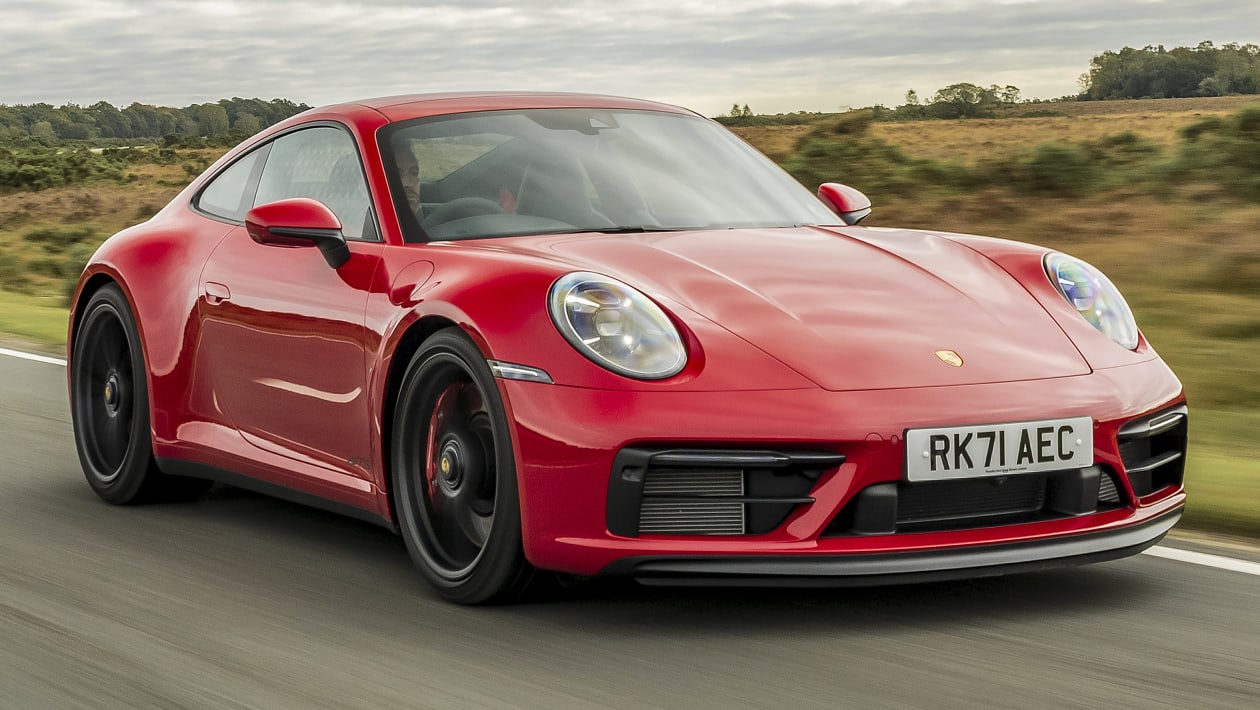
13. **Porsche 911: The Timeless Driving Machine**
The Porsche 911 isn’t just a sports car; it’s arguably one of the most iconic automobiles ever created. Celebrated for its instantly recognizable, timeless design and world-class engineering, this masterpiece has consistently maintained its loyal fanbase for decades. Its distinctive rear-engine layout and unwavering attention to detail set it apart, creating a driving experience that truly transcends.
The allure of the 911 lies in its perfect blend of everyday usability and exhilarating performance. Each generation refines the formula, delivering a driving sensation that is both engaging and incredibly precise. From classic air-cooled models to the latest high-tech Turbo S, the 911 has continuously evolved while staying true to its core identity, captivating discerning drivers with consistent excellence.
The global Porsche community is vast and passionate, with around 306k members on r/Porsche. Here, 911 fans discuss everything from intricate details of classic air-cooled models to cutting-edge features of the newest Turbo S. Porsche owners are renowned for immense pride, often regarding the 911 not just as a vehicle, but as a cherished, lifelong dream car, a symbol of automotive perfection.
Car Model Information: 2021 Porsche 911
Name: Porsche 911
Caption: The 1 millionth 911 produced on display at Volkswagen Group Forum, Berlin
Designer: Ferdinand Alexander Porsche
Manufacturer: Porsche
Production: September 1964 – present
Assembly: Stuttgart,Baden-Württemberg
Class: Sports car
BodyStyle: unbulleted list
Related: unbulleted list
Layout: Rear-engine design,rear-wheel drive
Predecessor: Porsche 356
Categories: 1970s cars, 1980s cars, 1990s cars, 2+2 coupés, 2000s cars
Summary: The Porsche 911 model series (pronounced Nine Eleven or in German: Neunhundertelf, or colloquially Neunelfer) is a family of two-door, high performance rear-engine sports cars, introduced in September 1964 by Porsche of Stuttgart, Germany, and now in its eighth generation. All 911s have a rear-mounted flat-six engine, and usually 2+2 seating, except for special 2-seater variants. Originally, 911s had air-cooled engines, and torsion bar suspension, but the 911 has been continuously enhanced, and evolved across generations. Though the 911 core concept has remained largely unchanged, water-cooled engines were introduced with the 996 series in 1998, and front and rear suspension have been replaced by Porsche-specific MacPherson suspension up front, and independent multi-link rear suspension.
The 911 has been raced extensively by private and factory teams, in a variety of classes. It is among the most successful competition cars. In the mid-1970s, the naturally aspirated 911 Carrera RSR won world championship races including Targa Florio and the 24 Hours of Daytona. The 911-derived 935 turbo also won the 24 Hours of Le Mans in 1979. Porsche won the World Championship for Makes in 1976, 1977, 1978, and 1979 with 911-derived models.
In a 1999 poll to determine the Car of the Century, the 911 ranked fifth — one of two in the top five that had remained continuously in production (the original Beetle remained in production until 2003). The one millionth example was manufactured in May 2017 and is in the company’s permanent collection.
Get more information about: Porsche 911
Buying a high-performing used car >>>
Brand: Porsche Model: 911
Price: $126,995 Mileage: 8,629 mi.
Read more about: Beyond the Badge: Uncovering the True Financial Realities of Owning a Classic Porsche 911

14. **Mitsubishi Lancer Evolution: The Rally Legend Unleashed**
The Mitsubishi Lancer Evolution, affectionately known as the “Evo,” is a rally-inspired powerhouse that cultivated an incredibly devoted cult following. This beast is celebrated for its turbocharged engine and sophisticated all-wheel-drive system, making it a formidable competitor on rally stages and streets alike. It’s a car built for pure, unadulterated, spirited driving, earning global admiration.
What truly set the Evo apart was its engineering prowess, designed to conquer diverse terrains and conditions with remarkable agility and speed. This capability, combined with its aggressive styling, made it a darling among tuners and driving purists. They sought a vehicle that could truly push the limits of performance; the Evo was all about the thrill of the journey, not just the destination.
Even though production concluded in 2015, its passionate fanbase shows no signs of waning. Forums like EvoM, with over 120k users, are vibrant hubs where fans fervently discuss everything from performance modifications to intricate tuning advice. They aim to unleash every last bit of power from their beloved Evos, showcasing truly impressive collective knowledge and shared passion within this community.
Car Model Information: 2021 Buick Envision Preferred
Name: Mitsubishi Lancer Evolution
Caption: Mitsubishi Lancer Evolution X
Manufacturer: Mitsubishi Motors
Production: 1992–2016
BodyStyle: sedan (car),station wagon
Assembly: Japan:,{{blist,Okazaki, Aichi,Kurashiki, Okayama
Class: Sport compact car
Layout: Front-engine, four-wheel-drive
Engine: Straight-four engine,Mitsubishi Sirius engine#4G63,Mitsubishi 4B1 engine#4B11T
Transmission: Twin Clutch SST,5-speed automatic (2002, 2006–2007),manual transmission,6-speed manual (2003–2008)
Predecessor: Mitsubishi Galant VR-4
Related: Mitsubishi Lancer,Mitsubishi Lancer WRC,Mitsubishi Racing Lancer
Categories: 2000s cars, 2010s cars, All-wheel-drive vehicles, All Wikipedia articles in need of updating, All articles needing additional references
Summary: The Mitsubishi Lancer Evolution, popularly referred to as the “Evo”, is a sports sedan and rally car based on the Lancer that was manufactured by Japanese manufacturer Mitsubishi Motors from 1992 until 2016. There have been ten official versions to date, and the designation of each model is most commonly a Roman numeral. All generations use two-litre intercooled turbo inline four-cylinder engines and all-wheel drive systems.
The Lancer was originally intended only for Japanese markets, but demand on the “grey import” market led the Evolution series to be offered through Ralliart dealer networks in the United Kingdom and in various European markets from around 1998. Mitsubishi decided to export the eighth generation Evolution to the United States in 2003 after witnessing the success Subaru had in that market the previous year with the Subaru Impreza WRX.
All domestic-market versions, until the release of the Evolution IX in 2005, were limited by a gentlemen’s agreement between Japanese car manufacturers to advertise no more than 280 PS (206 kW; 276 hp). However, sources say Mitsubishi had already been producing cars with more power but had been underrating the official power outputs in order to comply with the agreement. Therefore, each subsequent version has unofficially evolved above the advertised power figures, with the Japanese-market Evolution IX reaching an alleged output of around 320 PS (235 kW; 316 hp). Various special versions available in other markets, particularly the UK, have official power outputs up to 446 PS (328 kW; 440 hp).
The tenth and final generation of the Lancer Evolution, the Evolution X, was launched in Japan in 2007, and overseas markets in 2008. The Evolution X was produced for almost 10 years until Mitsubishi retired the Lancer Evolution in April 2016.
Get more information about: Mitsubishi Lancer Evolution
Buying a high-performing used car >>>
Brand: Mitsubishi Model: Lancer Evolution
Price: $19,500 Mileage: 52,471 mi.
From the titans of brand loyalty like Ford and Toyota to the electrifying innovation of Tesla, and now to these incredible cult classic vehicles that stir the soul, one thing is abundantly clear: automotive loyalty is a powerful force. It’s about more than just transactions; it’s about connection, passion, and the shared joy of the open road. These cars, whether mass-market favorites or niche icons, prove that when an automaker truly understands and excites its audience, it builds not just customers, but a lasting community of dedicated fans who wouldn’t trade their ride for anything. So, buckle up, because the passion for cars, and the loyalty they inspire, is a journey that never ends!


